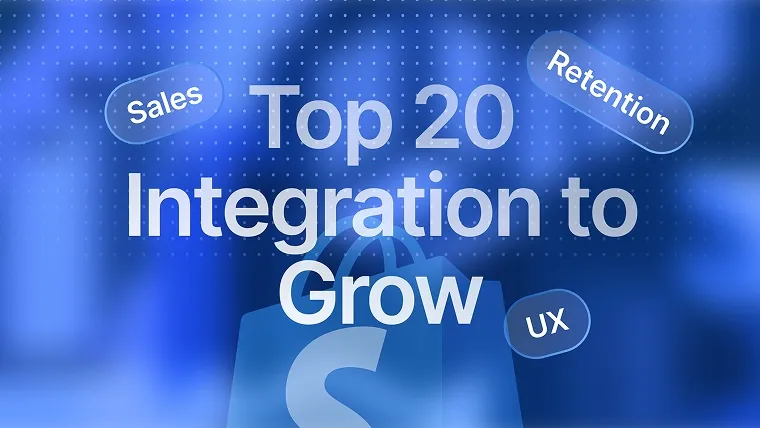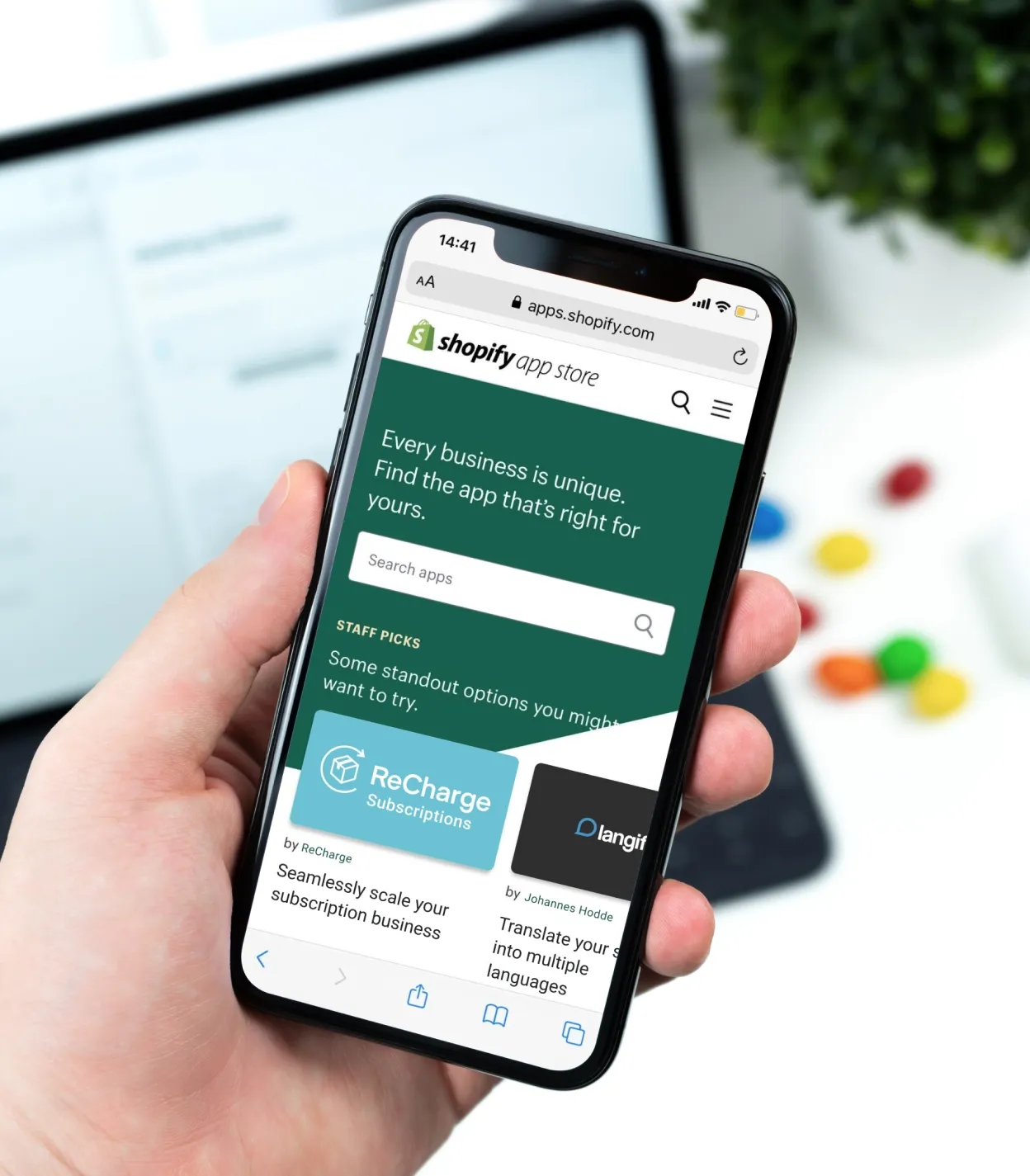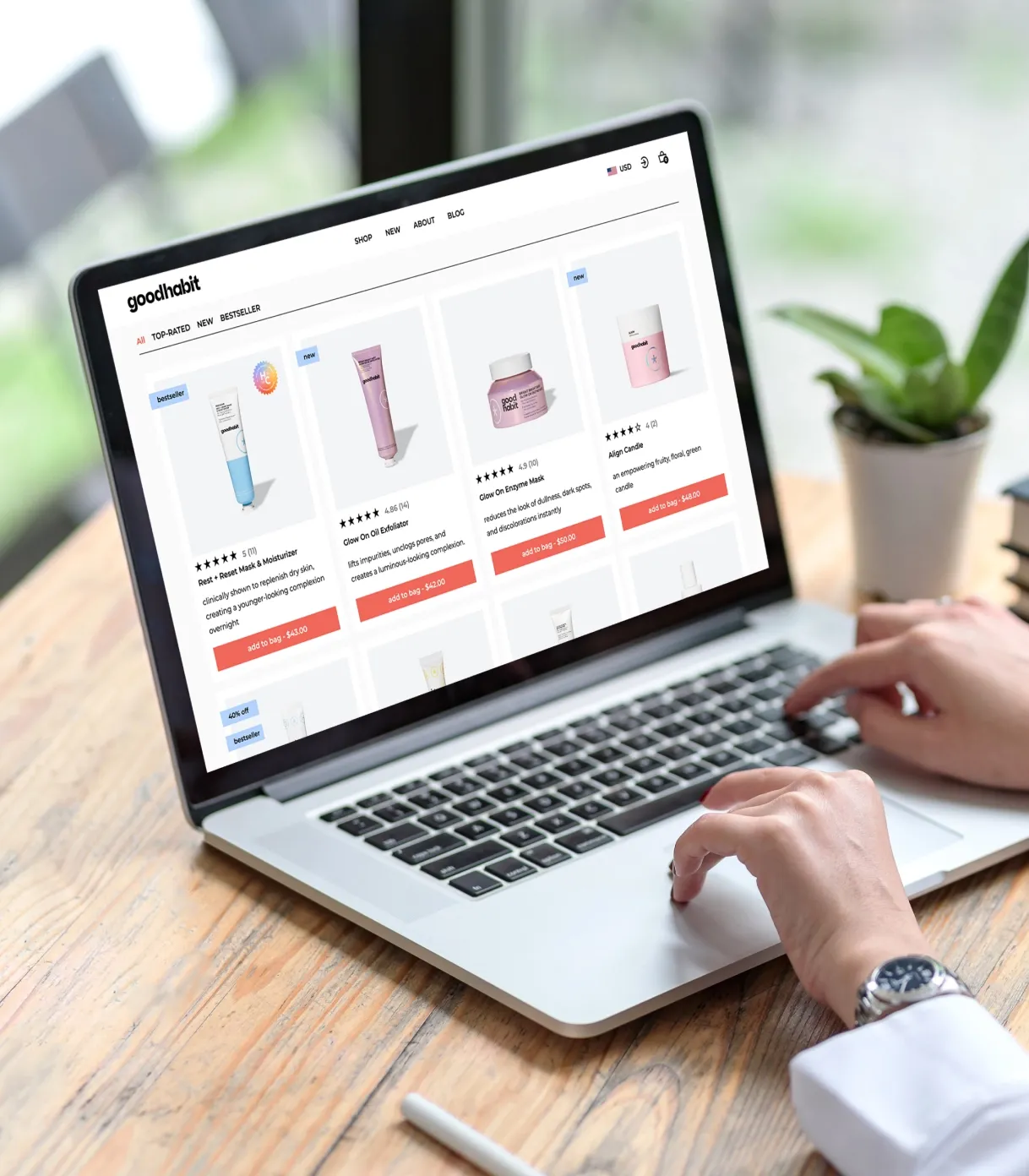
Shopping is no longer reserved for offline or online. An e-commerce ecosystem is becoming increasingly complex. In addition to digital vs. brick-and-mortar stores, we’ve got social media, social commerce, and a variety of ways to search for items. Hence, experts predict that in 2024, omnichannel will be more important than ever.
Omnichannel customers are actually average customers already. They use a variety of channels to research items they intend to buy. In the USA, search engines, Amazon, and retailer websites are the top three options. What does it mean for businesses? Not every channel will drive sales, but each needs proper maintenance.
Enhancing the omnichannel experience is one of the top four growth opportunities for retail executives in 2024. So, let’s learn more about why it matters so much and how it works in practice. In this article, you’ll find the key benefits of the omnichannel approach. There are also a few implementation strategies your e-commerce business can use.
Understanding omnichannel customer experience
So, what is omnichannel experience? Understanding this concept is critical to building the right strategy. To begin with, let’s pay attention to its defining features and a few key concepts.
Multichannel vs. omnichannel experience
Omnichannel is not the same as multichannel. Although these words may seem identical, there’s a significant difference. Both involve several interaction points between a brand and a customer. Yet, multichannel ends with the quantity. Meanwhile, omnichannel promotes unity, consistency, and personalization.
In an omnichannel experience, the customer is at the center of interaction. Everything is built around them. The experience across channels is seamless. The customer gets uninterrupted flow. And it doesn’t matter where they interact with the brand. It can be an online store, a physical sales point, social media, or support chat.
What does it mean in practice? Imagine you’re shopping online for a new pair of shoes. If you aren’t sure about the size, you quit the website. Later on, you see a related ad with a discount on social media. You pass by a physical store of this same brand and go in to try on the pair you liked. You pick one and use a code from the brand’s ad.
In multichannel, these things aren’t always connected. There are separate discounts for online and physical stores. The franchise stores can decide on some offers independently. The website and physical stores can have different inventories. There are still several channels. The difference is that each functions as a standalone option for customer experience.
Key concepts of omnichannel customer experience
What is omnichannel customer engagement? Omnichannel marketing takes the 4P concept and turns it into 4C. Instead of the classic product, price, promotion, and place, we get:
Customer. A brand delivers seamless and personalized experience across all touchpoints. It understands customer needs, preferences, and behaviors.
Convenience. Shopping is as easy as possible for the customer. This can include multiple purchase channels, quick checkout, flexible payment and delivery, etc.
Consistency. There’s uniformity and coherence across all channels and interactions. Messaging, branding, pricing, and service quality are identical online and offline.
Content. A brand creates relevant, engaging, and valuable content across touchpoints. Everything is tailored to the needs and interests of different customer segments. Product information, entertaining content, personalized recommendations, and everything else is well-thought-out.
If you type in “What is omnichannel engagement?” in the search, you can find some other interpretations of the 4Cs. Still, they all revolve around consistency, personalization, and respect towards your audience. That’s what matters most in Shopify development.
Why omnichannel matters for e-commerce businesses
Omnichannel customer engagement is essential for e-commerce businesses. It lets them stay relevant and competitive. The boundaries between channels are blurring. Consistent experience is important to keep consumers less puzzled and more focused. To be more specific, e-commerce businesses can drive the following advantages:
more solid brand image and experience
expanded reach and accessibility
data-driven insights and better personalization
enhanced customer experience
increased engagement and loyalty
higher conversions and customer lifetime value
easier adaptation to changing consumer behaviors
improved operational efficiency
better competitive potential.
It may seem too good to be true. Yet, omnichannel experiences, seemingly simple to create, can drive impressive results. You just need to know how to realize them the right way. In the following sections, we’ll focus on that.
The impact of omnichannel CX on e-commerce success
There are many ways to improve customer experience (CX), and omnichannel is among them. It enables businesses to create a cohesive and personalized journey for each customer. This results in higher satisfaction, conversions, and loyalty. Moreover, gathering and analyzing data for further decision-making becomes easier.
Increased customer engagement and satisfaction
Let’s look at the shopping behavior among UK and US adults. Consumers use multiple channels to research and buy products. Over ⅓ combine online and offline experiences into a single purchase. A brand prioritizing some channels over the rest will miss some opportunities.
Meanwhile, an omnichannel customer experience system can significantly boost engagement and satisfaction. For instance, 58% of US Gen Zers start their online search on Amazon, 43% on Walmart, and 43% on TikTok.
There are three important points here.
- E-commerce businesses may want to think of their stores as product discovery pages. They aren’t places for conversion only now.
- Integration between online ordering and in-store pickup is necessary.
- Omnichannel customer service strategy and loyalty programs contribute to convenience. They also drive user satisfaction.
Higher conversion rates and sales
Gen Z is reportedly less prone to impulse buying. But so are other groups, given the inflation, job losses, and economic situation these days. It takes shoppers longer to convert. Brands can partially fix this with proper messaging. Yet, you get more chances to increase conversion and sales if you offer several channels.
It is essential to enable a continuation of a user flow through all touchpoints. Social media is a great tool for product discovery. Still, 38% of US shoppers look up the brand or product on a retailer’s website before buying it. Almost 30% would visit a physical store, and 23% would talk to friends or family first.
There are many touchpoints to consider. An omnichannel approach keeps consumers more focused on your brand. The reports also show 5% to 15% revenue growth after implementing omnichannel transformations.
Enhanced brand loyalty and advocacy
The omnichannel strategy makes a brand more recognizable. Consistent branding and communication make the company visible. Users are more likely to feel that they know and relate to the brand. Thus, you foster strong relationships, often slowly and step-by-step. The result is loyalty and advocacy. And they are critical for long-term success in e-commerce.
Nike, Sephora, and Target are examples of brands that understand how omnichannel works.
All three have integrated e-commerce platforms, mobile apps, and physical store networks.
Nike and Sephora offer virtual try-ons for convenient shopping.
Target prioritizes convenience in a way that’s more appropriate for the retail giant. It provides same-day delivery, order pickup, and curbside pickup.
All have loyalty programs, personalized deals, discounts, and rewards functioning across the network.
Through personalization and availability, brands get to build communities around themselves. They offer added value to shopping, gradually turning shoppers into loyal customers. And it works the same way for smaller businesses.
Omnichannel customer engagement strategies for Shopify
So, how to improve omnichannel customer experience? Shopify omnichannel may call for some changes in branding, marketing, and sales. But it’s unlikely to become a huge challenge. Basically, it’s a logical evolution of an e-commerce strategy. You can be certain to already have a background for this.
Below are a few simple strategies. They can make a good start for your omnichannel Shopify transformation.
Seamless integration of online and offline channels
In general, this strategy involves inventory management, pricing, and promotions across all touchpoints. The first step is extending offers and rewards across digital and physical stores. Of course, you may practice exclusive, time-limited discounts for online or on-site purchases. However, it’s better to keep it as an exception, not a rule.
Shopify merchants can use the Shopify POS (Point of Sale) system to manage this. This system allows them to synchronize their online store with physical retail locations. For example, it enables features like click-and-collect. It lets customers order an item online but finish the shopping in a physical store. This enhances flexibility and engagement.
Personalization and targeted marketing
Around 80% of consumers are more likely to interact with a brand that offers personalized experiences. Also, 70% of consumers expect a brand to provide personalized responses to customer service needs. Personalization can mean different things. Experts suggest merchants start personalization by offering the right products to a consumer.
Shopify is good with personalization. You can tailor offers to the preferences and behaviors of your omnichannel customers. Use tools to categorize customers based on purchase history, browsing behavior, and demographics. This data lets you set up targeted campaigns. Work with recommendations, abandoned cart emails, loyalty rewards, etc.
Utilizing data analytics for informed decision-making
Analyzing customer data, sales trends, and marketing performance lets you gain actionable insights. Knowing your customers’ behavior and preferences is a background for better-informed decisions. By understanding which channels drive the most traffic and what offers and activities your audience prefers, you can plan more effectively.
Shopify’s dashboard provides comprehensive reports and metrics. Moreover, you can extend these opportunities by connecting the right Shopify Apps. These tools open new ideas and opportunities for campaigns. They also highlight areas for improvement, opportunities for cross-selling and upselling, and more.
Providing consistent and cohesive customer experiences
Why is it crucial to enable unified omnichannel engagement across all touchpoints? Consistency promotes reliability and user trust. Three in four customers are more loyal to stores with consistent customer service. Moreover, people tend to research product descriptions and price comparisons while shopping in-store.
You can achieve consistency by maintaining uniform branding, messaging, pricing, and service standards across all channels. Shopify merchants can synchronize customer data and interactions. It will enable consumers to access account data across different devices and platforms. Stores will get wholesome user portraits.
Future trends and innovations in omnichannel CX
E-commerce keeps evolving, and merchants have no other choice but to keep up. Competition is fierce. There’s only one way for e-commerce businesses to stay relevant. They need to adapt to innovations and changing user needs.
Emerging technologies and trends shaping the future of e-commerce
Some innovative retail technologies are already changing e-commerce operations and experiences. For example, some physical stores are already using:
Ai-powered smart carts
interactive smart AI displays
intelligent tags
analysis of in-store behavior and external factors
shrink management.
Digital and omnichannel experiences have even more opportunities to support everything mentioned above. The most distinctive technologies and trends reshaping e-commerce include the following:
AI and ML. Smart algorithms analyze vast amounts of data to understand customer behavior and preferences. They enable personalized recommendations, chatbots for customer service, predictive analytics, and dynamic pricing.
Extended reality. AR and VR offer immersive and interactive experiences. Retailers use them for product visualization in real environments and virtual try-ons.
Voice commerce. Brands are already integrating voice-enabled shopping capabilities. Consider optimizing their websites and apps for voice search.
Internet of Things. IoT connects physical products to the digital world. This tech includes smart home appliances, wearable devices, and connected vehicles. They create a seamless integration between online and offline experiences.
Social commerce. Brands can now sell products on social media platforms. Features like shoppable posts, live shopping, and social shopping experiences make it possible. They add one more link to seamless omnichannel commerce and enhance engagement.
Subscription-based models. The plans can include recurring deliveries of products or services and discounts. Subscriptions foster customer loyalty and predictability for businesses. Meanwhile, shoppers get extra value from a brand.
These trends and technologies are driving innovation in e-commerce. They allow businesses to deliver tailored experiences across channels. They are shaping the future of the industry. And it seems to include even more omnichannel engagement with time.
Opportunities for Shopify businesses
How to stay ahead of the curve with your Shopify store? There are many opportunities to remain relevant and competitive.
- Focus on personalization. Shopify businesses should use customer data and analytics in daily operations. It allows them to tailor product recommendations, marketing campaigns, messages, promotions, and more. User segmentation will drive higher engagement and conversions.
- Embrace emerging technologies. Integrate AI-powered chatbots for customer service. Implementing AR for virtual try-on experiences. Optimizing for voice search and voice-enabled shopping. Track new trends and look at what you can use.
- Invest in sustainability and social responsibility. As consumers become more conscious, Shopify businesses can differentiate themselves by being responsible. Consider eco-friendly products, sustainable packaging solutions, and supporting social causes. It will resonate with your audience and boost their loyalty.
- Always optimize for mobile. For some, this point comes as non-negotiable. Responsive design, fast loading times, and mobile-friendly checkout processes are critical. Without this, the omnichannel experience won’t be complete.
- Innovate and adapt. Shopify merchants can adjust their offerings to stay relevant and competitive. Stay informed about industry developments. Experiment with new features and strategies. Work with customer feedback. These simple actions are enough to stay innovative.
Luckily, Shopify provides a large set of tools and resources to keep up with the trends. The journey towards the omnichannel model is the only natural development. Whether you plan for it or not, your e-commerce business will evolve to it sooner or later.
So start with simple things today: consistent branding, flexible fulfillment options, and personalization. It’s normal if you need help outlining the strategy and setting the priorities. In this case, consider requesting Shopify retainer services. The team of experts will help you plan and organize everything in small steps.
To wrap up
The omnichannel experience meaning can differ across companies. It depends on how many channels they are ready to integrate into the system right now. Even so, the customer journey omnichannel approach opens new opportunities for e-commerce businesses. Unifying user experience will improve the way customers interact with your brand.
Omnichannel engagement is all about consistency. In practice, it comes with many advantages. They range from wholesome design to higher customer lifetime value. The omnichannel approach has a strategic advantage. It uses simple tools and strategies. Still, it boosts customer engagement, conversions, sales, engagement, and loyalty.
Does it still sound too good to be true? Our team can explain the practical aspects of an omnichannel customer engagement platform. You will understand how to improve the consistency and efficiency of your store. We offer a variety of services, from Shopify integration to Shopify headless development. If it sounds interesting, contact us at any time. Let’s discuss how to create an omnichannel strategy for your e-commerce business.








































Was this helpful?
0
No comments yet